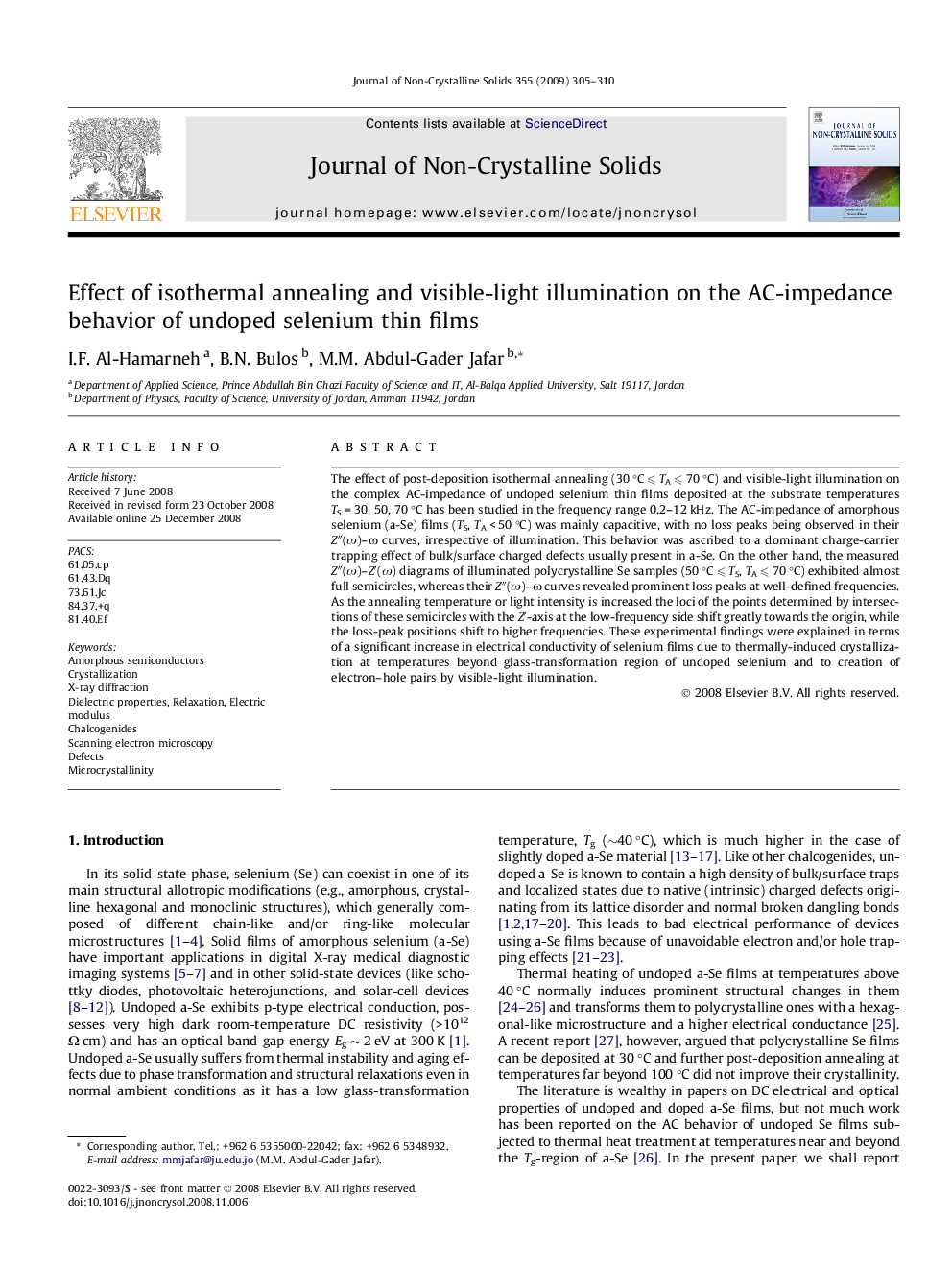| Article ID | Journal | Published Year | Pages | File Type |
|---|---|---|---|---|
| 1484288 | Journal of Non-Crystalline Solids | 2009 | 6 Pages |
The effect of post-deposition isothermal annealing (30 °C ⩽ TA ⩽ 70 °C) and visible-light illumination on the complex AC-impedance of undoped selenium thin films deposited at the substrate temperatures TS = 30, 50, 70 °C has been studied in the frequency range 0.2–12 kHz. The AC-impedance of amorphous selenium (a-Se) films (TS, TA < 50 °C) was mainly capacitive, with no loss peaks being observed in their Z″(ω)–ω curves, irrespective of illumination. This behavior was ascribed to a dominant charge-carrier trapping effect of bulk/surface charged defects usually present in a-Se. On the other hand, the measured Z″(ω)–Z′(ω) diagrams of illuminated polycrystalline Se samples (50 °C ⩽ TS, TA ⩽ 70 °C) exhibited almost full semicircles, whereas their Z″(ω)–ω curves revealed prominent loss peaks at well-defined frequencies. As the annealing temperature or light intensity is increased the loci of the points determined by intersections of these semicircles with the Z′-axis at the low-frequency side shift greatly towards the origin, while the loss-peak positions shift to higher frequencies. These experimental findings were explained in terms of a significant increase in electrical conductivity of selenium films due to thermally-induced crystallization at temperatures beyond glass-transformation region of undoped selenium and to creation of electron–hole pairs by visible-light illumination.
